Cuba 2017: Tales of a Musack Missionary
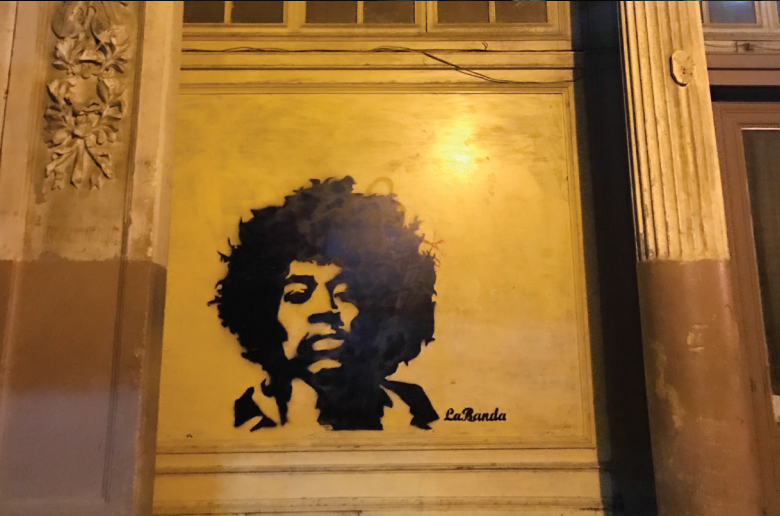
I made my way to Cuba with a simple mission—deliver one guitar to a music school there and see what happens.
Eight years ago, I started a musical charity, Musack (musack.org), which provides instruments and supports kids’ music programs, after a rash of teen suicides hit my high school on the island of Nantucket. (Today, Musack is making music happen in Nantucket, Los Angeles, Compton, Haiti and Appalachia.) The idea behind Musack was to give kids a voice through music during those shitty teen years when it feels like no one understands you and you are stuck on a foggy island way out at sea—literally or figuratively. We’ve always taken our mission from the sticker on Woody Guthrie’s guitar—“This machine kills fascists”— believing that guitar “machines” can do anything you want them to—kill fascists, make someone love you, share your story, let you be heard, etc. So, when the trip to Cuba came up, it seemed like a no-brainer to take a guitar and find some kids who might need it. Our friends at Horns to Havana (hornstohavana.org), another amazing program, recommended going by Conservatorio Amadeo Roldán.
Cuba is complicated and beautiful—a time warp, a hallucination of a place, like walking through a surrealist painting. There is something about the sea air and the music and the colonial architecture and the cars from the ‘50s and the politics that all mix into a crazy stew of wonderfully absurd contradictions, all bubbling with rum and symbolism and something new: optimism. I had visited twice before, once in 1992, just after the Soviet Union pulled out and basically left the lights out, and then again in 2000 for the Y2K New Year because if there was one place on the planet that wouldn’t shut down with the impending computer crash, it was Cuba. (After all, they didn’t even have any computers then.)
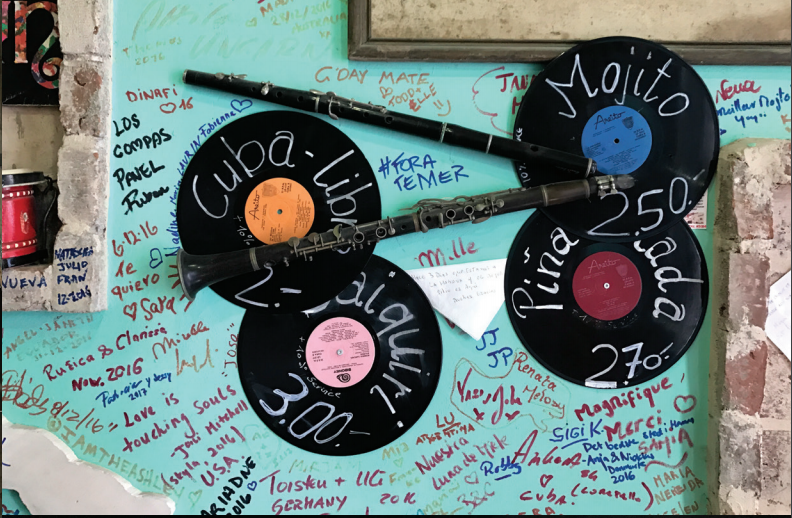
Both trips were amazing and eye-opening and brain-expanding. In fact, a visit to Cuba is a little like taking a hallucinogen. The dramatic change in perspective it provides can be that powerful. It reminds you that reality is something we make—that despite the bubbles we construct and live in, we are actually all connected and, at the end of the day, we’re supposed to take care of each other. Plus, it’s super colorful and crazy to look at—and some of the buildings are literally melting.
Another key to traveling in Cuba and/or tripping is remembering to always “go with the flow.” This is very important. You are not going to Club Med. Not everything is going to go the way you think it will. There will be good times and bad times, but if you “go with the flow,” you will ultimately be fine, probably have some laughs, maybe actually learn something and probably have your mind blown.
The way things have evolved in Cuba is like nowhere else on the planet, so nothing happens the way that your brain would predict. They’ve been in a bubble for years and been forced to improvise for decades, so you have no idea what you will find around any corner: 1950s America, 1980s Russia, 1700s Spain or some mishmash of them all. It’s completely unpredictable, so don’t even try—just fasten your seat belt and enjoy the ride. The doors to all the chaos and weirdness have been swung wide open to Americans for the first time in decades and, with cheap direct flights from Los Angeles, I couldn’t wait to get back.
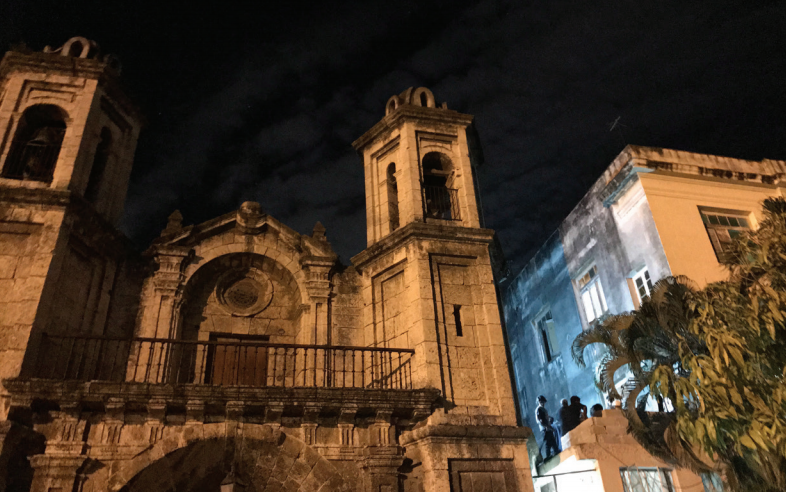
I packed a guitar, got on a plane and stuck out my tongue for a big tab of Cuba 2017. Four and a half hours later, it all started to kick in. I climbed of the plane and headed to Cuban customs. They looked at the large cardboard box and asked, “Guittara?” I said, “Si”—the extent of my Spanish class retention—but it did the trick and then—boom—I was time traveling. I found myself in the center of Old Havana, where the colors and light begin to change and the cars all morph into beautiful 1940s and ‘50s American road monsters, all against the backdrop of a combo of salt-faded Spanish Colonial splendor and Communist-era industrial ruin, like Peter Max meets Mad Max. I reminded myself it is super safe here and began to wander the streets. Havana is one of the great cities to wander around, like New York or Paris. You can walk for days and days, and the show never stops.
I stayed in the middle of Old Havana, which buzzes with nonstop activity through the night. Old Havana feels a little bit like a combo of Prague in 1990 mixed with French Quarter New Orleans, but also a thousand other things. I only half-slept—maybe there was too much speed in this dose of Cuba 2017 (or maybe it was just the combo of adrenaline and the strong Cuban cofee that is served at every meal.)
The Cuban people are thrilled to have us and have started to open their apartments for us to crash in. While the hotels, in general, are a bit business-standard (and way overpriced, as they are cashing in on the current high demand), there are a huge variety of perfectly crumbling mansions to rent directly from Cubans. Relying on Airbnb (called Casa Particulares in Cuba) in a country with limited to no internet can be an adventure, but if you go with the flow, you can stay for cheap and meet locals, which is totally worth it. Every single Cuban has a story to tell, so talk to as many people as you can. It’s mandatory.
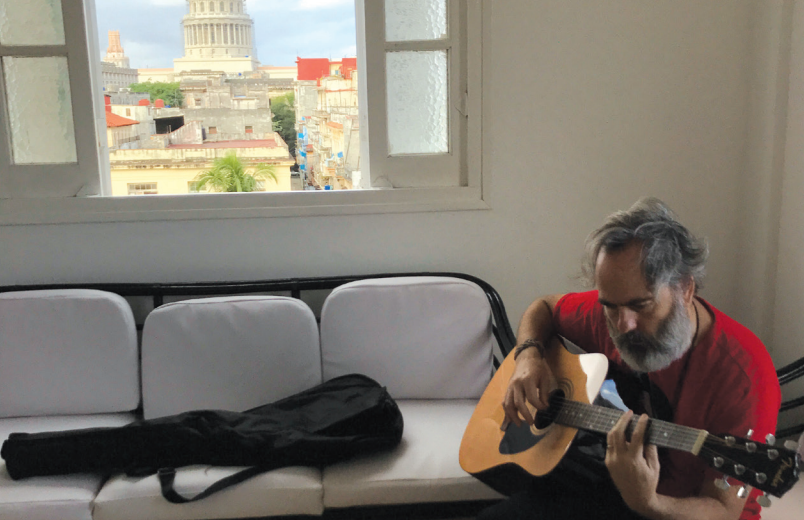
Music is everywhere. It is in the DNA of the island. It’s never been outlawed during any of Cuba’s iterations, and it is part of the bloodlines and lifelines of every Cuban. The music of Buena Vista Social Club is alive and well. While it has a strong presence on the tourist scene, it is great music nonetheless. The New Orleans vibe comes through with a lot of bars that attract tourists but still feel authentic, and the acts are top-notch and legit, playing long into the night. There is a house of music in almost every town, with musicians old and young playing samba, son, salsa and rumba. There is also a vibrant jazz scene, with places like The One-Eyed Cat packed almost every night.
But there is much more going on as well. There’s an underground hip-hop scene. There are kids in Metallica T-shirts. The Rolling Stones were just here for a massive free concert that almost everyone seemed to attend. The bubble that Cuba has been trapped in isn’t bursting, but it is expanding. New sounds and ideas are creeping in.
On our last full day, we walked through Old Havana with the guitar I brought, en route to the Conservatorio Amadeo Roldán. We had a true Buena Vista Social Club experience of people pointing us around town with various directions and explanations of where to find it. We finally reached the Conservatorio, which is a beautiful, old music school that has been in continual operation since 1903. The 350 kids who study there are incredibly talented and dedicated, and while they are only 30 miles away from Miami, they are in a world completely unlike anything we know. For example, there are no music stores in Cuba. None. That means when a string breaks, it is broken. When a reed breaks, you have to reglue or carve it—you have to improvise and make do.
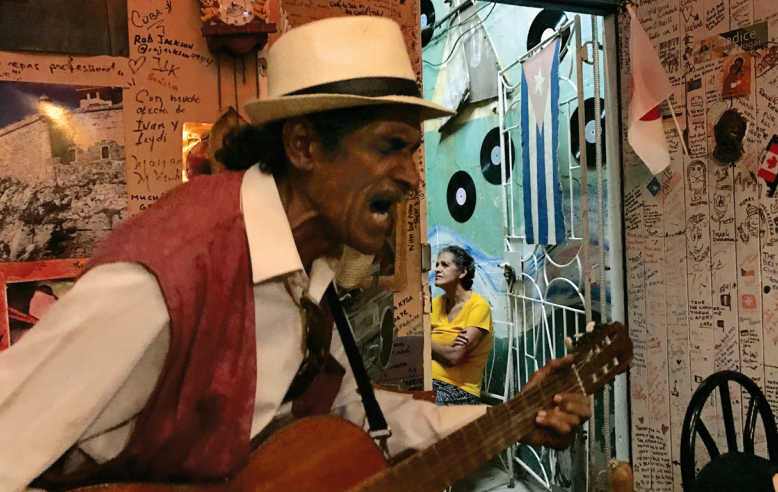
We were blown away by the musicianship as we watched a rehearsal with the school director. He introduced us to one of the guitar teachers and treated us to a private mini concert by one of his students. They were bursting with smiles at the brand new Fender guitar that we brought them. They passed it around and all commented on how easy and great it was to play. We discussed how hard it was for them to get instruments—it’s not as easy as just shipping stuff to them. The Rolling Stones bought them eight horns when they played their show in Cuba, and the horns had just arrived that week—eight months later— because of paperwork and customs forms and embargo/ political nonsense.
We left inspired by these talented, next-gen musicians who need instruments. We came up with the idea of telling all of our friends who go to Cuba to take a guitar or two to these kids. We’re calling it Musack Missionaries. If you wish to help, then please contact us. We’ll hook you up with some tips on where to go and so forth. You can carry a couple guitars or reeds or whatever, visit some kids— minds blown all around.
As much as traveling in Cuba is like a flashback or a hallucination, it’s quite real for the millions of people who live there. Cuba is weird and strange on so many levels, but there is a pervasive hope happening right now—maybe more so than back home. There is a lot of stuf going on right now in Cuba—art and music and people raising their voices to be heard. There is also the joyful sound of kids shouting at the top of their lungs to rock-and-roll of all flavors. Viva la rock. Viva la revolución.
Donick Cary, the co-founder of Musack (and host of the organization’s annual Rock and Roll Carnival), is an Emmy-winning writer and producer. After getting his start on Late Night with David Letterman, he has written for The Simpsons, Silicon Valley, Parks and Recreation, Bored to Death, New Girl and many other shows. He also created the animated series Lil’ Bush and is currently directing the feature documentary Bad Trip for Ben Stiller’s Red Hour Films.



















